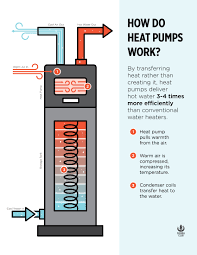From Worldometer (new COVID-19 deaths yesterday):
DAY USA WORLD Brazil India South Africa
June 9 1093 4732 1185 246 82
July 22 1205 7128 1293 1120 572
Aug 12 1504 6556 1242 835 130
Sept 9 1208 6222 1136 1168 82
Oct 21 1225 6849 571 703 85
Nov 25 2304 12025 620 518 118
Dec 30 3880 14748 1224 299 465
Jan 14 4142 15512 1151 189 712
Feb 3 4005 14265 1209 107 398
Mar 2 1989 9490 1726 110 194
April 6 906 11787 4211 631 37
May 4 853 13667 3025 3786 59
June 1 287 10637 2346 3205 95
July 7 251 8440 1595 817 411
Aug 4 656 10120 1118 532 423
Sept 1 1480 10470 703 505 235
8 1700 9836 250 339 253
14 1934 9001 709 281 300
22 2228 9326 839 279 124
29 2190 8859 643 309 108
Oct 5 1811 7495 686 285 103
6 2102 8255 543 315 59
12 1819 7544 201 249 37
19 2005 7528 401 160 80
26 1451 7535 409 584 53
Summary: Looks better for the USA, but let's see what it looks like tomorrow.
If you live in Hawaii, chances are you don't know anything about heat pumps. If you live elsewhere, the odds are you similarly don't have a clue. Read about the
1948 invention of this device. If you saw something like this outside a home today, those are heat pumps.
An air conditioner, as you know, provides cool air. But have you ever felt the outside of this device? It is warm, if not hot.
Thus, a heat pump in warm weather absorbs heat from the outside and converts it into cool air inside. In cooler weather, the heat pump provides heat from the outside, which does not seem to make sense when it is cold there in the winter. But temperature is a funny thing.
Read this article to understand the facts. Another advantage is that a heat pump uses electricity and
delivers three times more heat energy to a home than the electrical energy it consumes. No fossil fuels and now no exotic ozone layer destroying / global climate change inducing gases.
If you're still mystified, the following graphic and this explanation might work to educate you.
To summarize:
- If you live in Honolulu, you almost surely are kept comfortable with an air conditioning system. Heating is unnecessary. Someday, in Honolulu, we will get this cool from the ocean, as shown to the right.
- If you are from the northern part of the northern hemisphere, or southern part of the southern hemisphere, if you can afford it, you have separate air conditioning and heating systems, paying for both, and probably utilizing electricity for the former and natural gas for the latter.
- A heat pump run on electricity would be one system that does both cooling and heating. To quote:
According to energy.gov, a heat pump can deliver as much as 3 times more heat energy to a space than the electrical energy it uses. That translates to greatly reduced energy bills for you. An average home might save as much as $1,000 per year.
If you’re using a heat pump as your sole source of heating and cooling, there’s only one system to maintain, and one system to diagnose and repair if anything goes wrong. That also lowers your total cost to operate.
Heat pumps do use electricity, but they don’t consume fossil fuels to produce heat. When you don’t have to rely on an oil or gas burning furnace, you’re doing your part to reduce the use of fossil fuels.
 The bottom line is that you really can't use just a heat pump for really cold climates. However, Congress extended the Consolidated Appropriations Act of 2021 to include heat pumps for federal tax credits, so for this year at least, you will want to look into this option, depending on your situation. Surely worthwhile for zones 1-3. Check with your installer for zones 4 and higher.
The bottom line is that you really can't use just a heat pump for really cold climates. However, Congress extended the Consolidated Appropriations Act of 2021 to include heat pumps for federal tax credits, so for this year at least, you will want to look into this option, depending on your situation. Surely worthwhile for zones 1-3. Check with your installer for zones 4 and higher.
If you are in a geothermal area, a different kind of heat pump should be considered. But even if you don't and live on a large lot, especially with a pond or well,
even in a state like Minnesota, maybe.
Read this.There is that matter, though, of your local electricity being generated using fossil fuels. Heat pumps will gain in reducing climate warming when the renewable alternatives begin to dominate over fossil fuels in electrical power plants.
The obvious question is, should you use a heat pump with a PV panel on your roof? The short answer is yes. But this is more complicated than that. Ask your dealer, for battery storage and that geo-option are factors worthy of possible integration into the mix. Tax incentives would certainly help.To close, something totally different from a heat pump. A skin illusionist from Serbia:
I should mention one more thing. The Dow Jones reached an all-time peak of 35,893 yesterday, and ended at 35,781, the highest ever. The market is down today.
One weather item is that Typhoon Malou will strengthen to 105 MPH tomorrow, but is far to the east of Japan and not expected to cause any problems.
-









Comments
Post a Comment